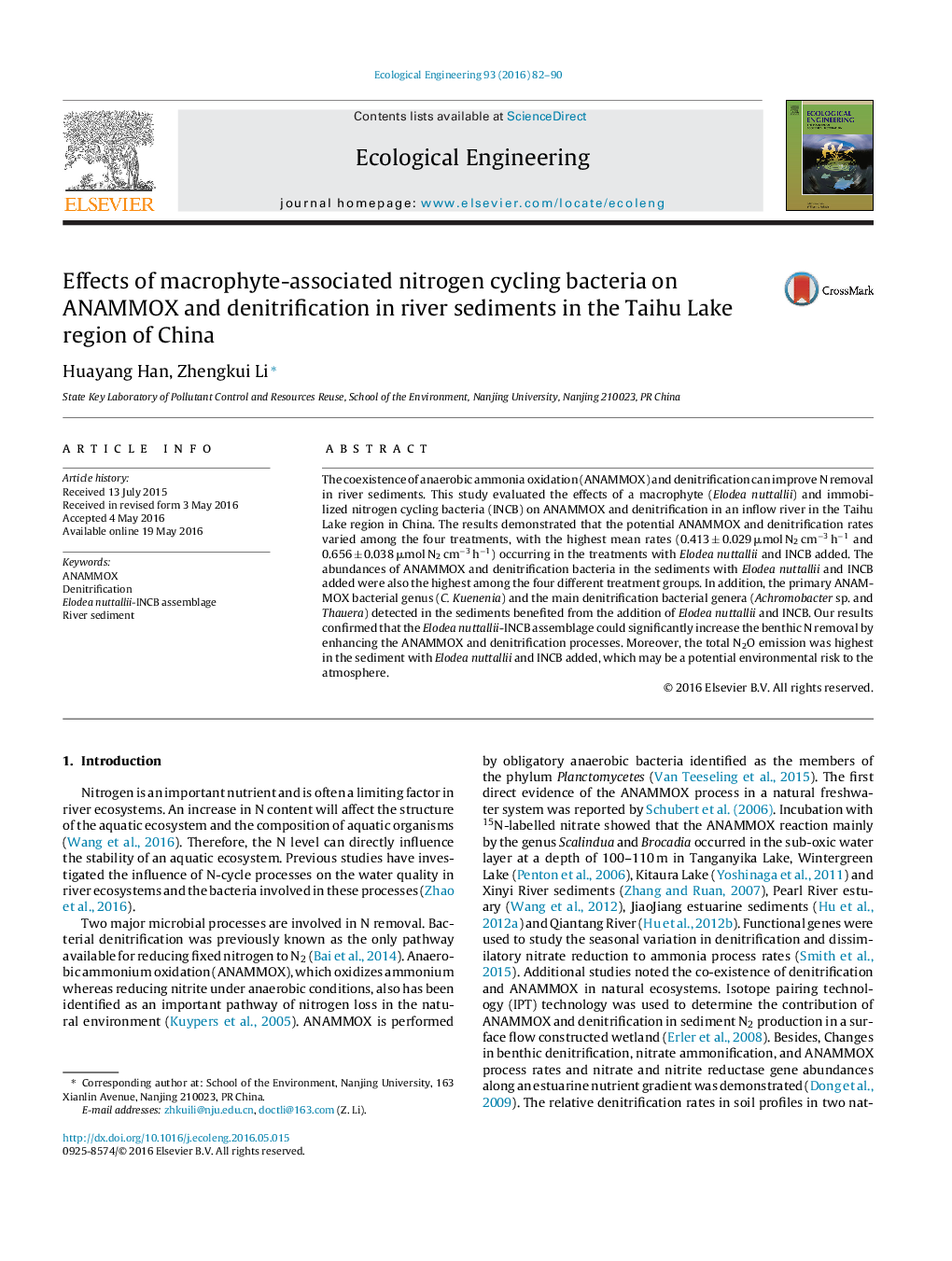| Article ID | Journal | Published Year | Pages | File Type |
|---|---|---|---|---|
| 4388716 | Ecological Engineering | 2016 | 9 Pages |
•ANAMMOX and denitrification processes in river sediment was improved by E-INCB.•The abundances and communities of ANAMMOX and denitrification increased.•The ANAMMOX and denitrification processes in N2 production were enhanced.•The effects of Elodea nuttallii and INCB on the N2O fluxes were determined.
The coexistence of anaerobic ammonia oxidation (ANAMMOX) and denitrification can improve N removal in river sediments. This study evaluated the effects of a macrophyte (Elodea nuttallii) and immobilized nitrogen cycling bacteria (INCB) on ANAMMOX and denitrification in an inflow river in the Taihu Lake region in China. The results demonstrated that the potential ANAMMOX and denitrification rates varied among the four treatments, with the highest mean rates (0.413 ± 0.029 μmol N2 cm−3 h−1 and 0.656 ± 0.038 μmol N2 cm−3 h−1) occurring in the treatments with Elodea nuttallii and INCB added. The abundances of ANAMMOX and denitrification bacteria in the sediments with Elodea nuttallii and INCB added were also the highest among the four different treatment groups. In addition, the primary ANAMMOX bacterial genus (C. Kuenenia) and the main denitrification bacterial genera (Achromobacter sp. and Thauera) detected in the sediments benefited from the addition of Elodea nuttallii and INCB. Our results confirmed that the Elodea nuttallii-INCB assemblage could significantly increase the benthic N removal by enhancing the ANAMMOX and denitrification processes. Moreover, the total N2O emission was highest in the sediment with Elodea nuttallii and INCB added, which may be a potential environmental risk to the atmosphere.
